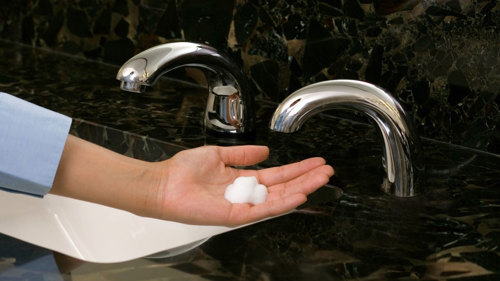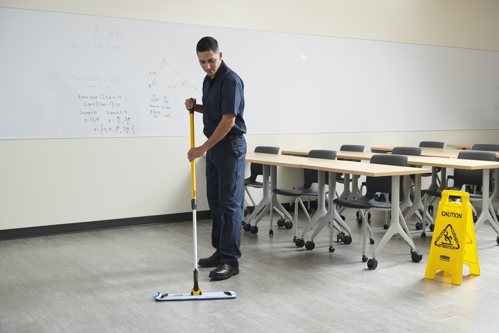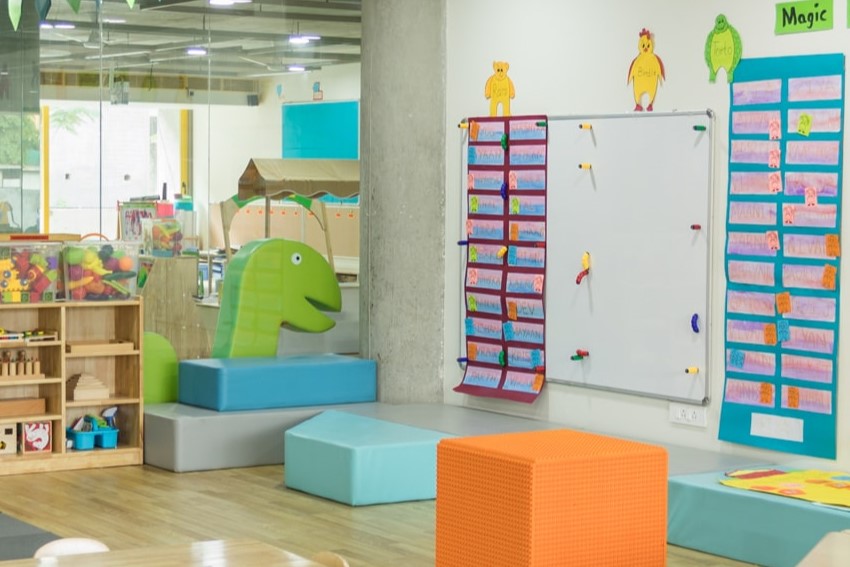Even with routine cleaning and regular sanitisation in place, no childcare facility is perfect at all times. While things like hand hygiene and disinfecting are vital to keeping daycares safe, it’s likely that germs will make their way into the facility at one point or another.
Here we’ll take a look at what childcare providers can do to prevent infection and what necessary steps help manage the spread if an outbreak does occur.
Increased risks in a childcare setting
There are a number of reasons childcare settings like preschools and daycares are more vulnerable to the spread of infectious diseases. A few factors that make communicable disease spread faster include:
- Close-contact settings. Childcare centres are typically indoor settings where many children play, eat, nap and do other activities alongside one another. With multiple young ones in a class together for hours, each disease and infection can spread quicker and more easily from person to person.
- Lower immunities. Little children also have less developed immune systems compared to teens and adults. Because of this, they are more likely to get sick since their bodies are less protected when exposed to certain germs and illness. This is especially true for first-time exposures.
- Personal care. Toddlers and young children are more likely to have less-than-ideal personal care habits. They may not wash hands properly, touch dirty surfaces or share personal items with one another. Daycare-aged kids also tend to touch their eyes, noses, ears and mouths, making them more susceptible to germs.

Childcare infection prevention best practices
Although childcare settings do experience higher risks of illness, there are many daily cleaning practices that can help minimise or even prevent spread throughout the classroom. Here are a few simple best practice tips to keep germs at bay:
- Ensure proper handwashing and good hand hygiene throughout the day.
- Vacuum carpets and mop floors.
- Sanitise toys and learning materials regularly.
- Keep food preparation areas clean and tidy.
- Don’t allow children to share food or drinks.
- Implement a cleaning schedule and daily routine for staff.
- Use a colour-coded cleaning system to prevent spread of germs.
With all of these simple tips in mind, it’s most important to ensure that staff and students that are unwell stay home.
Outbreak control best practices with young childrenEven with the best cleaning systems in place, illness can still enter daycare facilities eventually. Infection can start at home with a child, who then brings it to school before showing any obvious symptoms. While infection prevention is the first line of defence, it’s just as important for daycare managers and employees to know the proper steps to take to minimise and control spread.
Steps to take when an outbreak occurs:
- Send sick or infected children or staff home. If a child is sent to childcare and begins to show signs of illness or infection, the first step is to isolate them as soon as possible. Whether they are sent to an office setting or a health room, immediately taking them to another location will help reduce the spread of infection. Germs can travel through the air, from physical contact or through objects and surfaces.This means that if the child remains in close contact, sneezing or coughing will likely spread germs to other children. Similarly, if the infected individual continues handling toys or touching common surfaces, the facility is more at risk. Inform parents that the ill child should remain at home until their symptoms are gone.
- Perform additional cleaning and sanitising. If infection has already spread from one child to another within the facility, staff should perform extra cleaning practices.
- HYGEN™ Mops and Cloths help clean floors, nap areas and play areas. They can be the launderable style or the disposable range; both ranges ensure germs aren’t spread throughout the room.
- Disposable Microfibre Cloths can be used to sanitise high-touch areas like door handles, toilets, furniture and toys.
- Increase hand washing and personal hygiene practices. Increase hand washing if infection has potentially begun to spread. If possible, staff should monitor hand washing during these times to make sure that children are thoroughly cleaning their hands, especially before eating and after using the bathrooms.
- Monitor everyone else in the childcare setting. Lastly, staff should continue to monitor the other children and employees. If any signs of infection spread are seen, staff will be able to control further illness.

Rubbermaid Commercial products in childcare settings
Rubbermaid Commercial cleaning products help support the high standard of cleaning needs in early childcare facilities. We offer a full range of cleaning supplies that work together to create cleaning systems and schedules to help keep children and staff safe and healthy.
Combine the best cleaning products, sanitisation equipment and disinfectant supplies to help improve staff cleaning systems and optimise infection prevention and control in early learning and daycare facilities. Our specialists can assist; contact us today!


